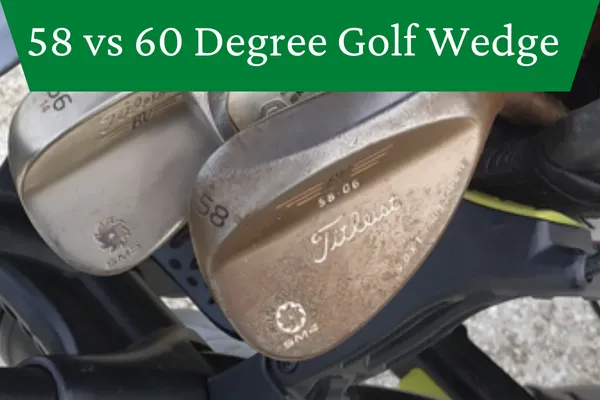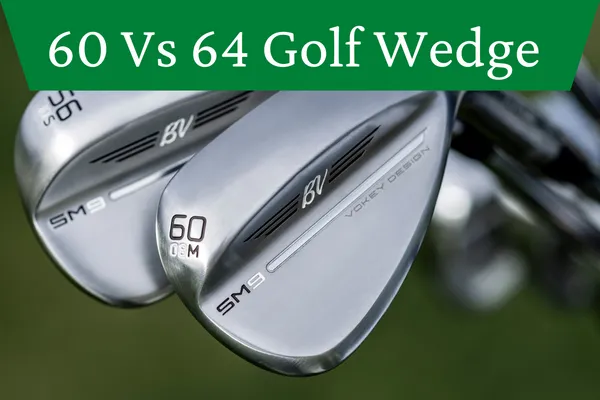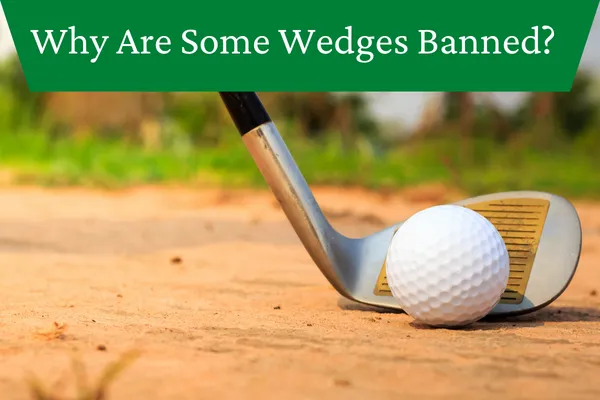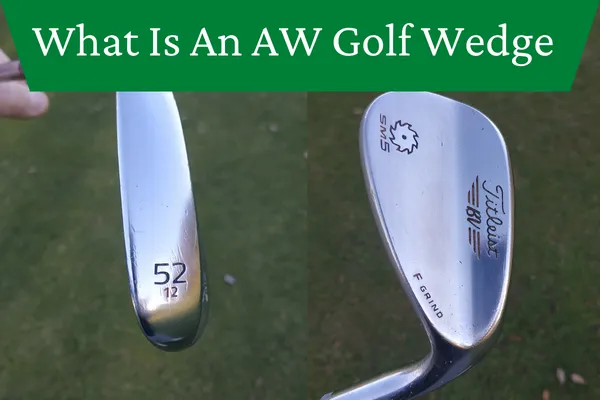How Long Should My Golf Wedges Be?
Wedges are an integral part of any golfer’s kit, offering a variety of shots depending on the loft, bounce and grind. Different manufacturers might have slightly different ideas on what is the best length of shaft for the wedges they produce.
For an off the shelf set of irons you will usually find the shafts are reduced by 0.5 inches down to a 9-iron with a shaft length of 36 inches. Wedges would then to step down in 0.25 inch increments from Pitch to Gap to Sand to a Lob Wedge at 35 inches. This is how Titleist/Vokey see things anyway. Mizuno in contrast have their PWs 0.5 inches less than their 9-iron and their GW, SW and LW at 35.25 inches a further 0.25 inches shorter.
For a man of around average height this length of shaft should be about right to produce enough speed and generate consistent distances which is what you are really looking for in a wedge.
The usual length for golf wedges is 35-36 inches, but this isn’t necessarily set in stone as different lengths can work better for different players. If you’re taller or shorter than average, then having a wedge that is too long or too short won’t help you at all, you will probably need the lie angle adjusting at the very least.
Knowing which type of wedge works best in certain situations will help determine how long the shaft in your wedge should be. Talk to your local pro shop or club fitter to get fitted properly so you can find the right length that matches your swing style and height.
What Are The Standard Lengths Of Wedges?
While there is no official standard most manufacturers will usually have their wedges in the 35-36 inch range. When thinking of buying a new wedge its also important to think about the amount of bounce and the type of sole grind. This will allow you to get clubs to suit the courses you play most often and your swing type.
Pitching Wedge
A pitching wedge, also known as just a wedge, is usually found as part of a set of irons although these days many players often replace it with a specialty wedge from the likes of Titleist, Mizuno, TaylorMade or Cleveland. It has a high loft, traditionally it would have been 52 degrees, and is used mostly for full shots from a relatively short distance (for most players 100 yards and in).
Over the years manufacturers decreased the lofts on most irons in a set to the point where a pitching wedge had a loft of 48 degrees. In some modern sets the PW can have as little as 41 degrees of loft. The typical length of a pitching wedge is 35.5-35.75 inches, but the correct length may vary depending on the player’s height, arm length and posture. When selecting the right size for your pitching wedge, it is important to take into account your personal preferences and characteristics to ensure that you are using the correct length of shaft for your game.
If you are having difficulty reaching the desired distances with your pitching wedge, it could be because you have chosen one that is not the standard length or that does not suit your body type. It is important to get fitted correctly for any golf club to ensure that you are getting maximum performance out of it. The lie of a wedge is usually 63 or 64 degrees but some players might need that altering by a degree or two.
Gap Wedge
A gap wedge is a type of wedge used by golfers to bridge the increasingly large gap between their pitching and sand wedge. Sometimes known as an approach wedge or AW they usually have lofts of around 52 degrees.
The typical length of a gap wedge is approximately 35.25-35.5 inches, which might be adjusted according to the golfer’s stature and stance. An average male golfer is likely to hit a gap wedge around 100 yards or so. It is typically one of the most versatile clubs in a golfer’s bag, as it can be used for both full and partial swings, with great accuracy. Gap wedges are often used for those tricky shots that require some extra finesse and spin control around the green. Although a gap wedge may not see as much action as an iron or driver, it still plays an important role in improving your game and should not be overlooked.
Sand Wedge
A sand wedge, also known as a SW, is a type of golf club used to play shots primarily from sand bunkers although it can be used anywhere you feel comfortable using the club. The standard length of a sand wedge is 35.25 inches and its loft angle traditionally was 56 degrees. The extra-large head size of the sand wedge gives it the capability to lift the ball up and out of bunkers more easily. The club was originally dreamed up by Gene Sarazen who used his creation to great effect to win the Open Championship at Prince’s Golf Club in 1932.
Lob Wedge
A lob wedge, also known as a utility wedge, is an invaluable club in a golfer’s arsenal. It has more loft than any other club and can be used to get the ball out of tricky spots such as bunkers and thick rough. The standard length of a lob wedge is 35-35.25 inches, although some golfers may choose to go slightly longer or shorter depending on their preference and physical build.
The loft of a lob wedge typically ranges between 58° and 64° and can be used for full shots as well as pitches, chips, and bunker shots. The higher the loft on the lob wedge, the higher the trajectory will be when taking a shot. A golfer should consider the type of terrain they are playing on when selecting the correct length for their lob wedge. It is important to have a comfortable fit in order to make accurate shots with this club.
What Can Happen If You Lengthen A Wedge Shaft?
The effects of lengthening the shafts on your wedges can be both positive and negative, depending on the golfer’s swing and build. An increase in the length of the wedge shaft will increase the swing weight, in theory making it easier for the golfer to swing their club faster and hit the golf ball farther.
On the other hand, longer wedges can also cause a decrease in accuracy of strike, making it more difficult for beginners to hit a consistent shot. Additionally, more experienced players may find that they need to adjust their technique when using longer wedges as their approach angle will be slightly different than with shorter ones. Ultimately, it is up to each individual golfer to decide if lengthening their wedge shafts will be beneficial or detrimental to their game.
Do Brands Matter When Buying Wedges?
When it comes to wedges, brands do matter to the golfer. If you are buying from the largest club manufacturers then their wedges come with different lofts, bounce angles and grinds, which can improve a golfer’s game in different ways. Smaller manufacturers can’t usually offer such a range of different loft and bounce combinations.
This does come at a significant price however with specialty wedges often costing $150 or more!
There is also a good chance that large manufacturers will offer free custom fitting sessions where you can have your ideal set of wedges tailored to your physique and golf swing.
What Are One Length Irons
This is just an idea that some manufacturers have tried where all the irons in your set have the same length shaft, usually the typical 7-iron length. The theory being it should make it easier to find the sweet spot with a consistent length of club particularly the 3-iron to 6-iron.
Do PGA Professionals Match Their Wedges To Their Irons?
Amateur golfers often wonder if the pros match their wedges with their irons. The answer is often yes, but it depends on the golfer and his endorsement contracts. Many players using Vokey wedges aren’t playing Titleist irons for example. A few years ago Cleveland were the most popular wedges on tour but few golfers used Cleveland irons.
A professional will usually be looking to get the best equipment they can to allow them to play their best. They will work with the technical people to get the right loft combinations to cover the yardages they need with the sort of ball flight that they like.
How Long Should My Golf Wedges Be: Summary
There is a reason why golf clubs tend to be produced to the specs that they are. It’s because they fit the widest range of people! If you aren’t of average build then its likely you will need the lie altered and possibly even a different length shaft. Given the cost of new clubs you should seriously consider a fitting!








